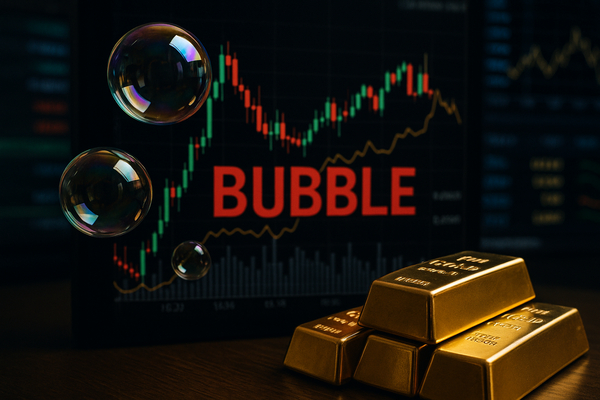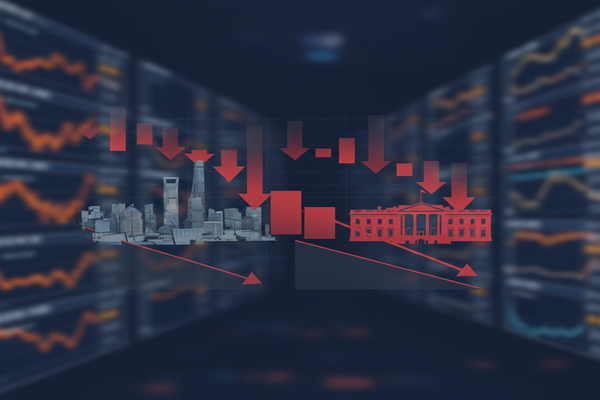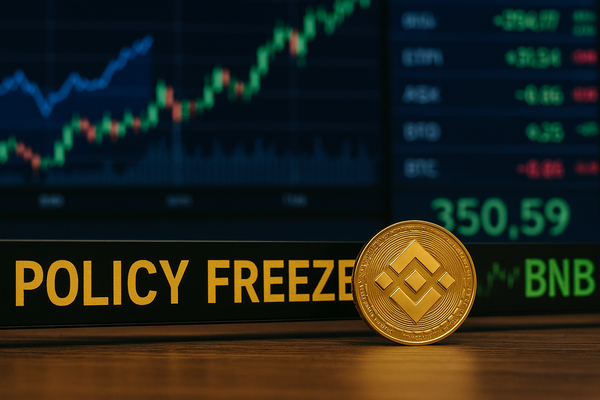
Stock market bubble warnings grew louder this week as major institutions and a leading bank chief raised the alarm about stretched valuations. The story matters now because markets have rallied hard while policy has turned dovish, creating short-term risk of a sharp repricing and longer-term concerns about the durability of economic expansion. Globally, the warnings resonate in the United States, Europe and Asia, while emerging markets face spillovers through commodity prices and capital flows. The twin rallies in equities and gold are unusual compared with recent cycles, and the combination of data delays and stretched oil spare capacity raises the stakes for the coming trading session.
Regulators and bankers flag valuation risks
This week the Bank of England and the International Monetary Fund publicly expressed concern about elevated market valuations. The head of JPMorgan (NYSE:JPM) added a stark warning about potential fallout if markets stop defying gravity. Those voices matter because they come from institutions with different vantage points. Central banks see macro risks. The IMF sees cross-border vulnerabilities. Large banks see market positioning risks.
Short term, these warnings could translate into higher volatility. Traders may reduce leverage and reprice risk assets more quickly than fundamentals warrant. In the long term, persistent overvaluation can amplify losses when growth disappoints or policy tightens. Historically, markets have corrected when investor exuberance outpaced economic momentum. The current cycle is notable for the coexistence of a strong equity rally and aggressive hedging in safe havens, a combination that has signaled caution in past episodes.
Gold rally stalls after big run
Gold climbed above $4,000 per ounce earlier in the week before stalling on Thursday. The metal has risen by more than 50 percent this year, a rare surge that reflects a mix of monetary easing expectations and hedge demand. Profit taking appears to have been a key factor in the recent pause. Investors bought gold to protect against a prolonged inflation burst that could follow lax monetary and fiscal policy in many advanced economies.
The simultaneous appetite for equities and for gold suggests a market split between growth chasing and risk management. Some investors are pursuing gains in high momentum sectors, especially those tied to artificial intelligence themes. Others are buying insurance in the yellow metal. That split raises questions about market conviction. If gold continues to rally, it can signal sustained inflation fears. If it falls back, risk appetite may regain the upper hand at least for a time.
Data vacuum heightens reliance on markets for signals
The U.S. government shutdown has entered its second week and is delaying key economic releases, including monthly employment figures. Missing data creates a vacuum for policymakers and market participants. Without official numbers, investors may rely more on market prices to infer economic health. One argument made this week was that the stock market itself offers timely information about growth and sentiment.
That reliance can be double edged. Market prices react instantly to new information and expectations, but they can also be swayed by positioning, technical flows and short-term narratives. Meanwhile, concerns about declining economic mobility highlighted by international institutions help explain why governments have adopted dovish stances. Lower mobility can reduce political tolerance for tightening policies even when inflation signals appear. This dynamic can keep policy looser for longer and complicate the outlook for risk assets and inflation expectations.
Energy supply choices and commodity risks
Oil markets were volatile this week. Prices rose early after OPEC+ announced a smaller than expected supply increase. Those gains were partly erased when reports emerged of a ceasefire agreement between Israel and Hamas. The immediate price reaction shows how geopolitical events and supply decisions interact to move markets. Over a longer horizon, continued OPEC+ output increases are eroding spare production capacity, which has served as a buffer against shocks in recent years.
Reduced spare capacity raises the probability of sharper price swings if geopolitical disruptions occur. In Europe, concerns are heightened by reports of heavy bombardment of Ukraine’s gas infrastructure ahead of winter. Damage to that system could have ripple effects on energy security and pricing across the continent. Renewables continue to expand rapidly worldwide, with some regions seeing policy support and others facing headwinds from political opposition or rising costs. China remains dominant in clean energy manufacturing and deployment, a factor that reshapes supply chains and competition in renewables.
On fossil fuel generation, an example of structural change is the forecast for a rare contraction in fossil fuel-fired power generation in Texas this year. That points to the accelerating pace of the energy transition in parts of the United States, even as traditional energy markets remain vulnerable to near term shocks.
Metals and minerals add to market uncertainty
Commodities beyond oil are also drawing attention. Indonesia has stepped up enforcement against illegal tin mining, which can reduce informal supply and affect prices. The Democratic Republic of Congo is working to tame a historically volatile cobalt market, a move that could influence battery raw material dynamics. Separately, rising tungsten prices and Chinese export controls on the metal are squeezing U.S. drillers because the metal is critical for drill bits. Rising input costs combine with broader inflationary pressures to raise extraction expenses for energy firms.
These developments matter because commodity costs feed into producer margins and consumer prices. They create regional winners and losers. Emerging market exporters of key metals may benefit from higher prices, while importers and manufacturers face tighter margins. Traders will be watching supply enforcement actions, export controls and geopolitical developments for signals on future price paths.
For the coming trading session, markets open with multiple narratives competing for attention. Valuation warnings from major institutions raise the premium on risk management. A pause in the gold rally and a temporary blackout in official U.S. data will likely increase reliance on market based indicators. At the same time, energy and metals developments introduce event risk that can spark abrupt price moves. Watch liquidity and positioning closely. Risk may materialize fast if sentiment shifts, but the combination of policy caution and continued demand growth means any move could be contested quickly.






